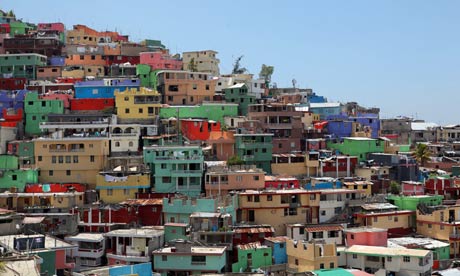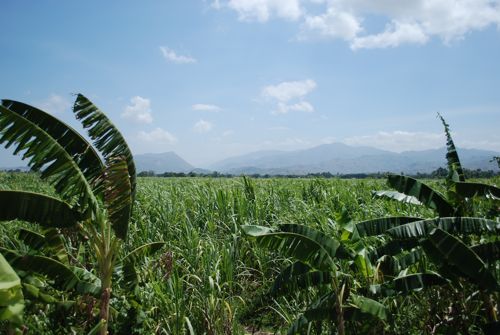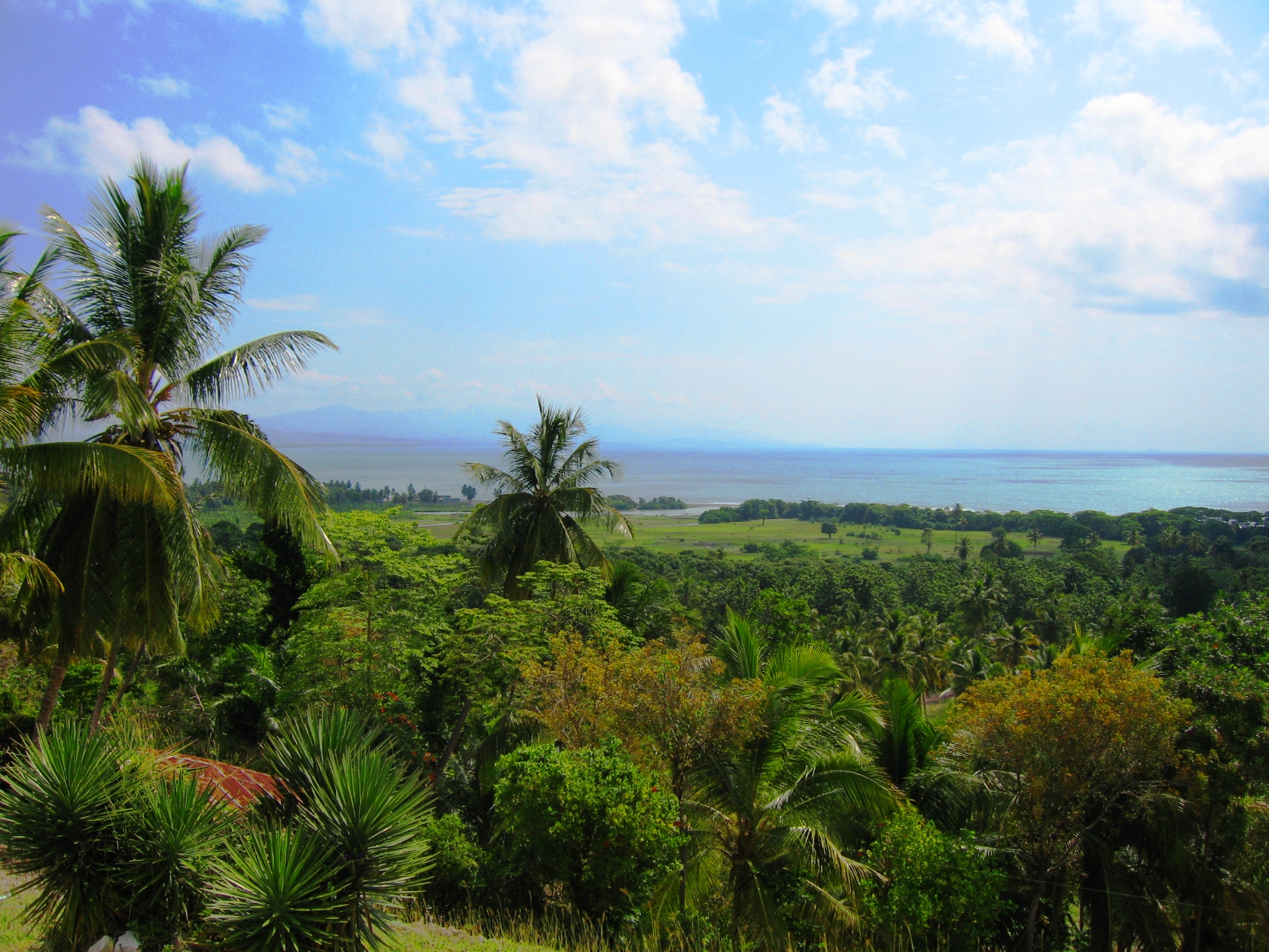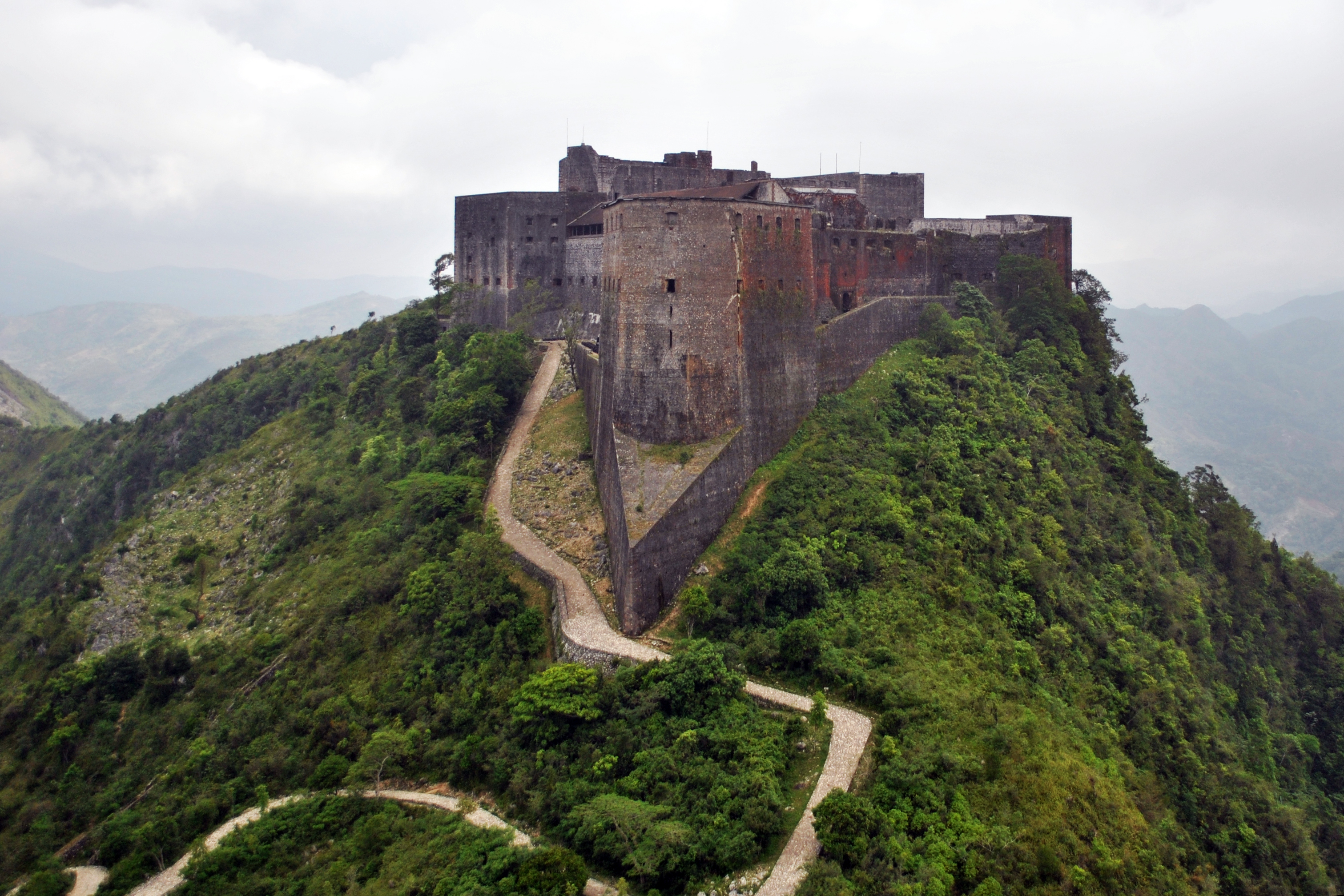Four years ago almost to the day, a 7.0 magnitude
earthquake rattled the area around the city of Léogâne, about 18 miles west of
the capital city of Port-au-Prince. This city of around 90,000 people had about
80-90% of its buildings damaged during the earthquake. Damage and destruction
spread all over Haiti and was also felt in neighboring Dominican Republic (on
the other side of the island). An estimated 100,000–160,000 people lost their
lives (although government estimates were practically doubled). Because there
are practically no building codes in Haiti, many homes collapsed under the
shifting of the earthquake or its 52 aftershocks. People lived in shanty towns
or refugee camps for weeks and months even, or they tried to cross the border
into the Dominican Republic. The oppressive heat was a fiend to those who tried
to bury the massive number of deceased. On top of it all, a cholera outbreak
ran rampant from lack of clean drinking water and poor sanitation. It was a
horrible time for Haitians and the rest of the world as we numbingly watched
on.
The name Haiti is the French form of the Taíno word
Ayiti, meaning “land of high
mountains.” In French, it’s spelled Haïti, indicating that the first i is pronounced: ah-EE-tee. In English,
we drop the umlaut and pronounce it as a two-syllable word: HAY-tee.
Haiti is located on the island of Hispaniola in the
Caribbean. It shares the island with the Dominican Republic. The Turks and
Caicos Islands and The Bahamas lie directly north, Cuba lies to the northwest, Jamaica to the
west, and Puerto Rico to the east.
If you travel directly south for quite a distance, you will most likely
hit the Colombian shores. Haiti has a tropical climate and is subject to
hurricanes as well as earthquakes. Deforestation and desertification is also a
problem in Haiti.
The Taíno Indians were the original inhabitants on
the island and other nearby islands. Christopher Columbus and his crew landed
here in December 1492 and subsequently brought with them European diseases that
the Taíno had no natural immunity against, such as smallpox, and killed off most
of them. However, later on the French laid claim to the island as well and they
fought over it; the French received the western third of the island in the
treaty. African slaves were brought to Haiti to work in the sugar cane fields,
and the brutality they received was no secret. They were given some rights
later on, and many were freed, but many of these slaves and freed blacks who
still had very little fought back not only against the Spanish and the British
who were there, but also the French government and the colonists. In the end,
the slaves persevered in this revolution and gained their own independence in
1804. This kind of revolt made the US very nervous, wondering if its own slaves
would attempt the same thing. In fact, the US along with many other nations
didn’t even recognize Haiti’s independence until after the US Civil War several
decades later. I found it interesting that in 1824, over 6000 slaves from the
US were given the opportunity to go to Haiti, but they found “the conditions
too harsh,” so they came back. Wow, really? Makes you wonder how harsh it had
to be in Haiti that coming back to US during the slavery years was preferable.
Haiti had some periods of civil unrest and also felt the impact of having a lot
of debt during the first part of the 20th century. In fact there
were over 70 dictators in Haiti’s first 109 years of existence. However, it later
became a tourist destination starting in the 1950s, and many famous writers,
musicians, actors, and dignitaries vacationed in Haiti. By the end of the 1980s
into early 1990s, Haiti underwent a couple of coups with another coup in
2004.
 |
| Reminds me of photos of the favelas of Rio de Janeiro, Brazil. |
The capital of Haiti is Port-au-Prince, a city of
about 2.4 million people in the metro area. Situated on the Gulf of Gonâve, this city is the center of
government, although many of the governmental buildings were destroyed in the
2010 earthquake. The city houses several universities, hospitals, and is an
important port city.
 |
| Sugar cane field |
Haiti relies on its agricultural exports such as
mangos, papayas, cacao, coffee, spinach, watercress, corn, bananas, and sugar
cane. They also rely on its tourism industry, albeit it comes with travel
advisories depending on where travelers go. Because Haiti still has a shortage
of skilled labor and high numbers of unemployed and underemployed, the country
depends on foreign aid; it’s still the poorest country in the Western
Hemisphere. Haiti’s infrastructure
is moderate at best, even in the cities. The 2010 earthquake took out a lot of
their roads, electrical grid, communications, etc. Much of it has been restored
since then, but there are still many areas that have intermittent access to
electricity and Internet access.
Haiti has two official languages: French and Haitian
Creole. French is used for official government business as well as the medium
for education. Haiti is also one of two countries in the Americas where French
is an official language (Canada being the other). Haitian Creole, a French-based Creole, is actually related
to Louisiana Creole in the US; not only is Haitian Creole (or Kreyòl) based on
French, but it also utilizes a lot of words and grammar from Spanish,
Portuguese, Taíno, and West African languages.
Most Haitians lay claim to either Catholicism or
Protestantism. However, native vodou (voodoo) is also intertwined with
Christian religions as well. You’ll find this practice of mixing indigenous
belief systems with Christianity or Islam in many West African countries as
well. Ex-priest Jean-Bertrand Aristide established Voodoo as a state religion
along with Catholicism. There are also a number of other religions brought into
Haiti, such as Islam, Bahá’í, Judaism, and Buddhism.
Looking past its poorness, it’s rich in culture and
things I find interesting. Gourds are so important to Haitians that their
currency is named after them: currently, $1USD = 46 Haitian gourdes. Carnival
and New Year’s Day are two of the largest celebrations of the year for most
Haitians and incorporates a lot of music and dance and voodoo traditions. The
Citadel (Citadelle Laferrière) in the northern end of Haiti is the largest fortress
in the Western Hemisphere and considered one of the Eighth Wonders of the
World. A lot of work needs to be done in Haiti: rivers are polluted leaving
many people without clean water, causing a myriad of health problems and
diseases; only a little more than half the people are literate, even less so
for girls; girls only attend an average of two years of school; sanitation
conditions are barely adequate in places; there are only about 8 doctors per
100,000 people; violence toward women is often not dealt with as a problem;
child labor is also not necessarily dealt with as a problem. There are many
people and organizations doing their part, but there is still much work to be
done. But despite these conditions, the people still are able to have some fun
at times, make music, dance, paint, play soccer, enjoy what they do have, and
share a good meal with friends and family as well.
Up next: art and literature






No comments:
Post a Comment